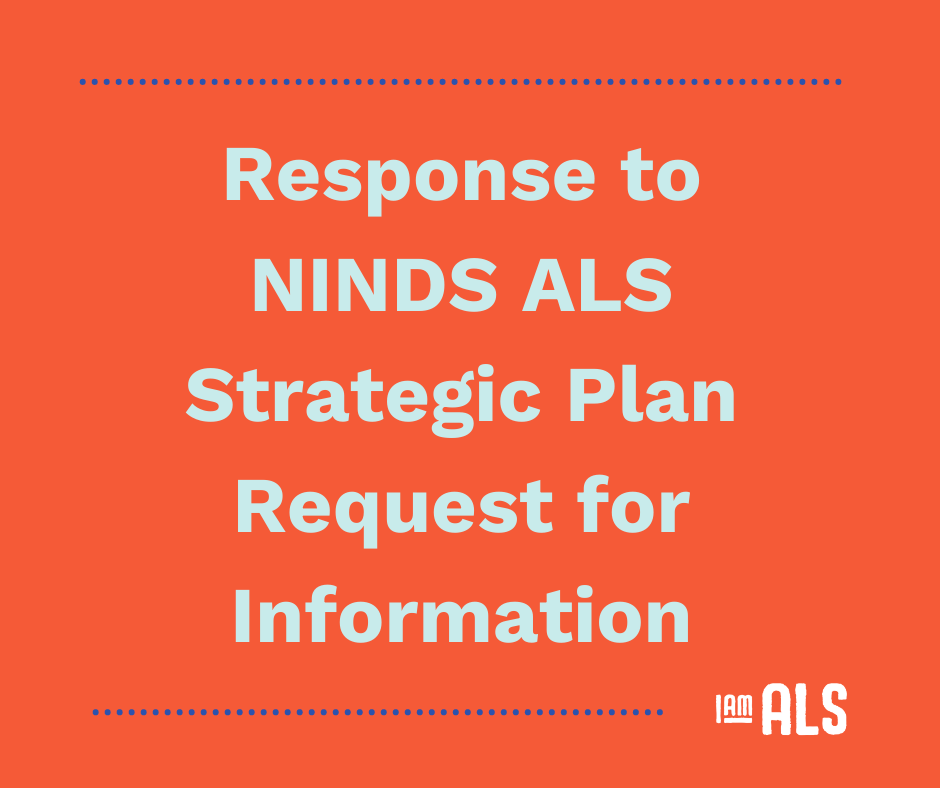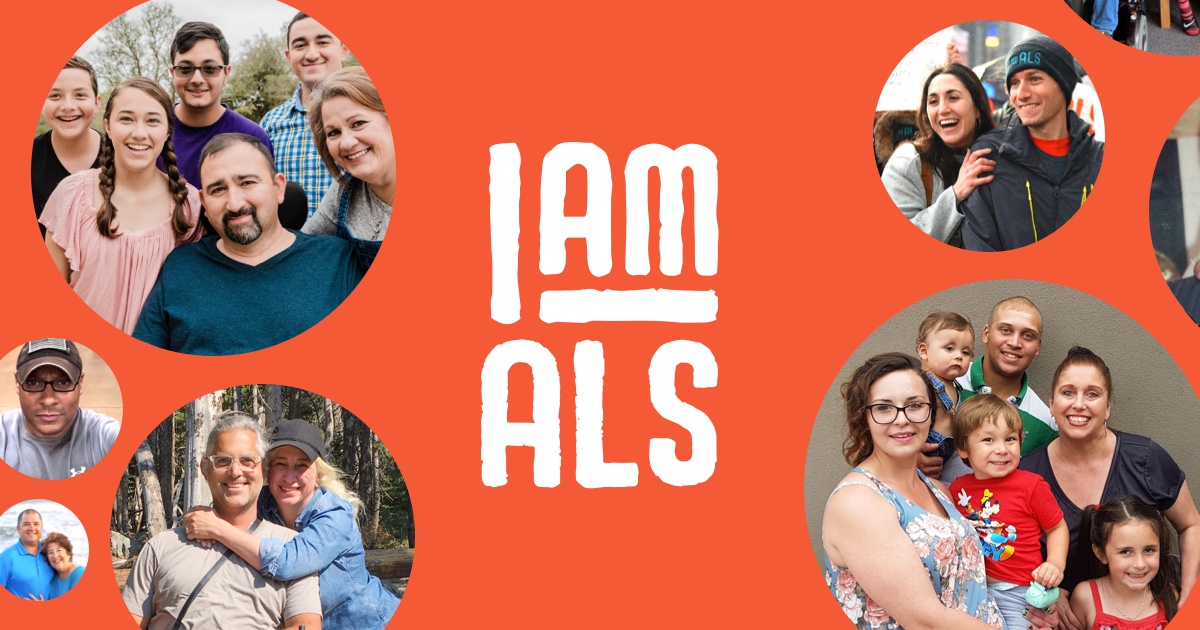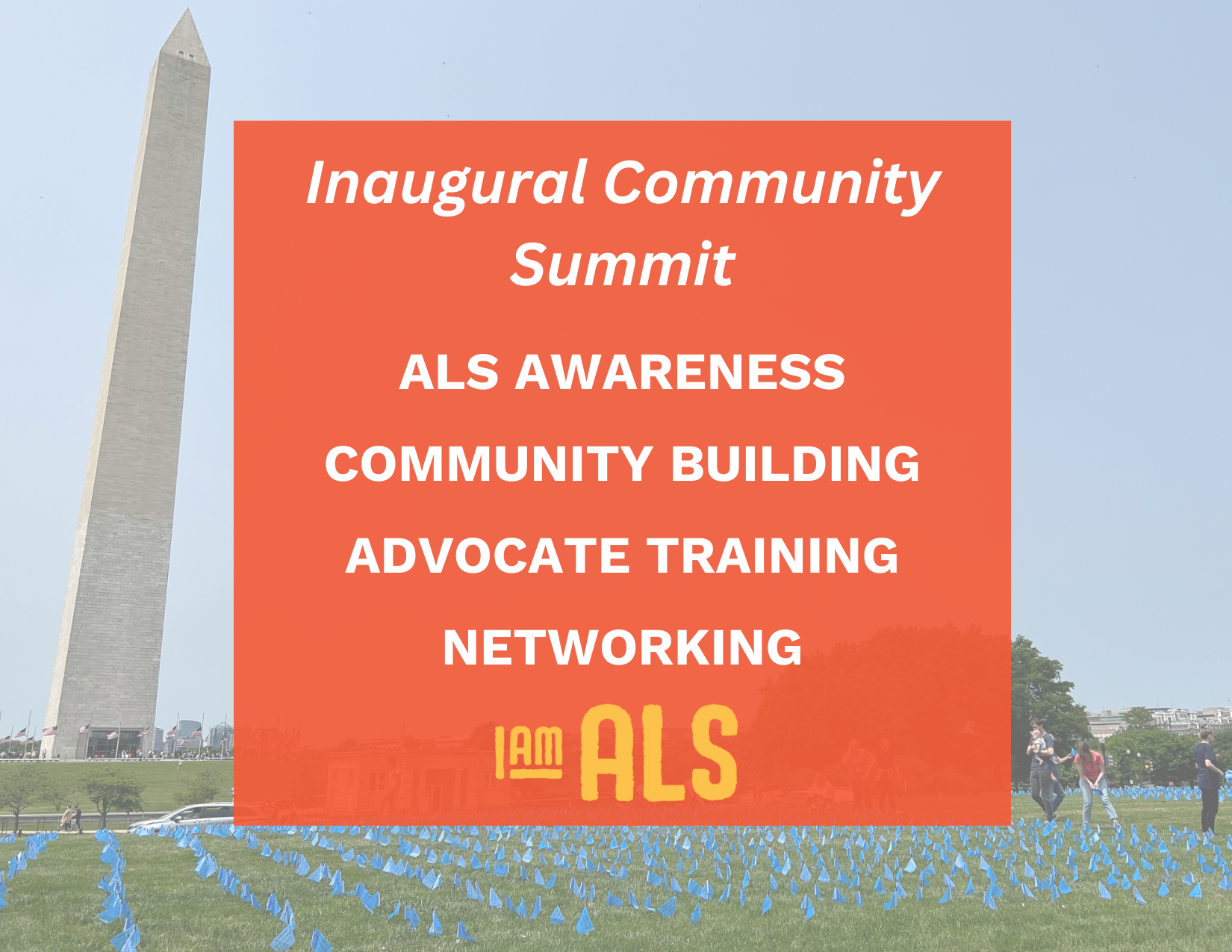Response to NINDS ALS Strategic Plan Request for Information

To: National Institute of Neurological Disease and Stroke (NINDS)
From: I AM ALS
RE: Response to ALS Strategic Plan Request for Information
Thursday, February 10, 2022
Dear NINDS team,
First and foremost, we would like to extend our sincere gratitude to NINDS for this opportunity to help shape the future of ALS research at NIH and beyond. We know that NIH/NINDS is the largest public funder of ALS research and also a global thought leader across the biomedical sciences, and we commend you for taking this necessary step to develop a comprehensive ALS Strategic Plan. We are so thrilled to partner with you in this effort, and we thank you for your continued commitment to working with those most impacted by ALS.
In response to your Request for Information, below are a set of patient-centered and community-informed research priorities, tools and systems that I AM ALS believes are essential to ending ALS as we know it.
1. Think beyond basic, pre-clinical research to build a better understanding of disease etiology and progression
(response to RFI prompt #1: Opportunities for understanding the genetic, molecular, cellular or neural pathway changes that cause ALS or influence disease progression, and RFI prompt #2: Strategies for translating discoveries into therapies)
We commend NINDS for its long-standing excellence in conducting and funding the foundational research that is essential to advancing knowledge and improving public health and wellbeing. In addition to continuing that important work, the three specific clinical research programs below, if held to NIH’s highest standards, would dramatically improve our understanding of the disease and offer essential treatment insights:
- Implement a large and comprehensive natural history study that includes widespread whole genome sequencing and analysis of those living with and at risk for developing ALS.
- Increase research in communities at higher risk of developing ALS (namely, carriers of gene variants and military veterans), with an eye toward novel approaches to disease prevention and pre-symptomatic care.
- Invest in research specifically designed to better understand the high degree of heterogeneity in ALS, a necessary step toward better precision medicine and developing frameworks for predicting whether an individual will respond to a given treatment.
2. Provide critical leadership in ALS research coordination across NIH and beyond
(response to RFI prompt #2: Strategies for translating discoveries into therapies, and RFI prompt #6: Opportunities for collaborations and partnerships that will accelerate the discovery of effective interventions for the diagnosis, treatment, management, prevention or cure of ALS)
We strongly believe that the role of NINDS in ending ALS goes beyond conducting and funding research. If we are to be successful in this goal, NINDS must bring to bear all of the expertise, knowledge and authority that NIH has to offer. Simply put: NIH must do for ALS what it has done for other disease areas, and NINDS must take the lead in these efforts. Specifically, NINDS must:
- Ensure strong coordination of all ALS research efforts across NIH. This should include building strong lines of communication and a shared vision for ALS among all NIH institutes and centers that fund or conduct (or could fund or conduct) ALS research, allowing for synergistic collaboration and avoiding unnecessary duplication of efforts.
- Improve the coordination between research in ALS and research in other neurodegenerative diseases with overlapping symptoms, pathological hallmarks, genetic associations, etc. (with a special emphasis on frontotemporal dementia).
- Serve as a convener and thought leader to strengthen partnerships and collaborations with the rest of the ALS research community, to include academic institutions, research institutes, medical centers, biopharma, nonprofits and other government and non-government funders.
- Ensure a robust pipeline of ALS researchers through ALS research training grants and other targeted training programs.
3. Invest in improved clinical research design, access, and reach
(response to RFI prompt # 3: The most important factors to consider when conducting clinical research)
Compared to other fields (e.g. oncology), the ALS clinical trial system is woefully behind where we need it to be. As our understanding of the underlying biology of ALS improves, and our approaches to target identification and therapy development become more sophisticated, we must be sure the ALS clinical trial system (e.g. trial design, tools, infrastructure, etc.) keeps pace. We cannot allow the trials to fail the drugs. In addition, we are not collecting clinical data from the majority of people living with ALS, since all clinical trials are restricted to people within two years of symptom onset. We need the expertise and leadership of NIH to build the systems and resources necessary to provide ALS clinical trials that meet the needs of the community and are set up for success. To do this, NINDS must:
- Invest in and standardize innovative and more patient-centric clinical trial designs (a la the community-developed PaCTD rating criteria).
- Explore novel outcome measures for clinical trials, to include improved measures of function, noninvasive biomarker identification and validation, approaches to remote monitoring, etc.
- Expand the number and reach of clinical trials by developing an expansive and equitable trial network.
- Expeditiously implement the expanded access research grant program mandated by Section 2 of ACT for ALS. This will both improve access to investigational therapies and allow for much needed data collection on a larger and more advanced segment of the ALS population.
4. Invest in understanding and responding to existing health disparities in ALS research and care.
(response to RFI prompt # 3: The most important factors to consider when conducting clinical research, #4: Biggest challenges for people currently living with ALS and their caregivers, and #7: Inequities, if any, that limit the ability of people living with ALS, their families and caregivers to participating in the research process)
ALS has no known association with race or ethnicity, and yet prevalence estimates reveal that fewer people of color are diagnosed with the disease in the U.S. Emerging research suggests the reason for this may be reduced access to care and diagnosis. For instance, Black and African American people experience, on average, an 8-month delay to diagnosis compared to their White counterparts, resulting in delayed care. This delay also means that Black and African American individuals present with more advanced ALS at diagnosis than White Americans. Additional concerns exist for people living in so-called “deserts of care” (i.e. in rural areas or other areas far from an ALS clinic), who often do not have easy access to a neurologist, let alone an ALS specialist.
Furthermore, people of color, women and people of low socioeconomic status are poorly represented in ALS clinical trials, where the majority of participants are White males with high incomes. For these and other reasons, it is essential that NIH take the lead on:
- A concerted effort to improve our understanding of existing health disparities in ALS care and research.
- Prioritizing and incentivizing equitable recruitment for all clinical research.
- Exploring novel approaches (and employing known approaches) to resolving health disparities toward a more equitable ALS research and care system.
5. Center the ALS community in developing research priorities (response to all RFI prompts)
The ALS advocacy community has a unique and holistic view of the ALS landscape, and the tens of thousands of Americans living with and impacted by ALS bring an especially critical perspective. Together, we serve as an invaluable resource and thought partner for NINDS in identifying needs and accelerating research progress. NINDS must continue to recognize the value of authentically engaging and partnering with the ALS community, and commit to better understanding their lived experiences by:
- Purposefully strengthening partnerships with the ALS advocacy community and those living with and directly impacted by ALS.
- Regularly and meaningfully engaging the ALS community in all ALS research initiatives.
Thank you again for this tremendous opportunity. We look forward to our continued partnership and to a world without ALS.
With hope,
I AM ALS

We will find cures for ALS. The only question is when. That answer depends on you.
Stay informed on I AM ALS’ progress and what you can do to help us make hope real.

